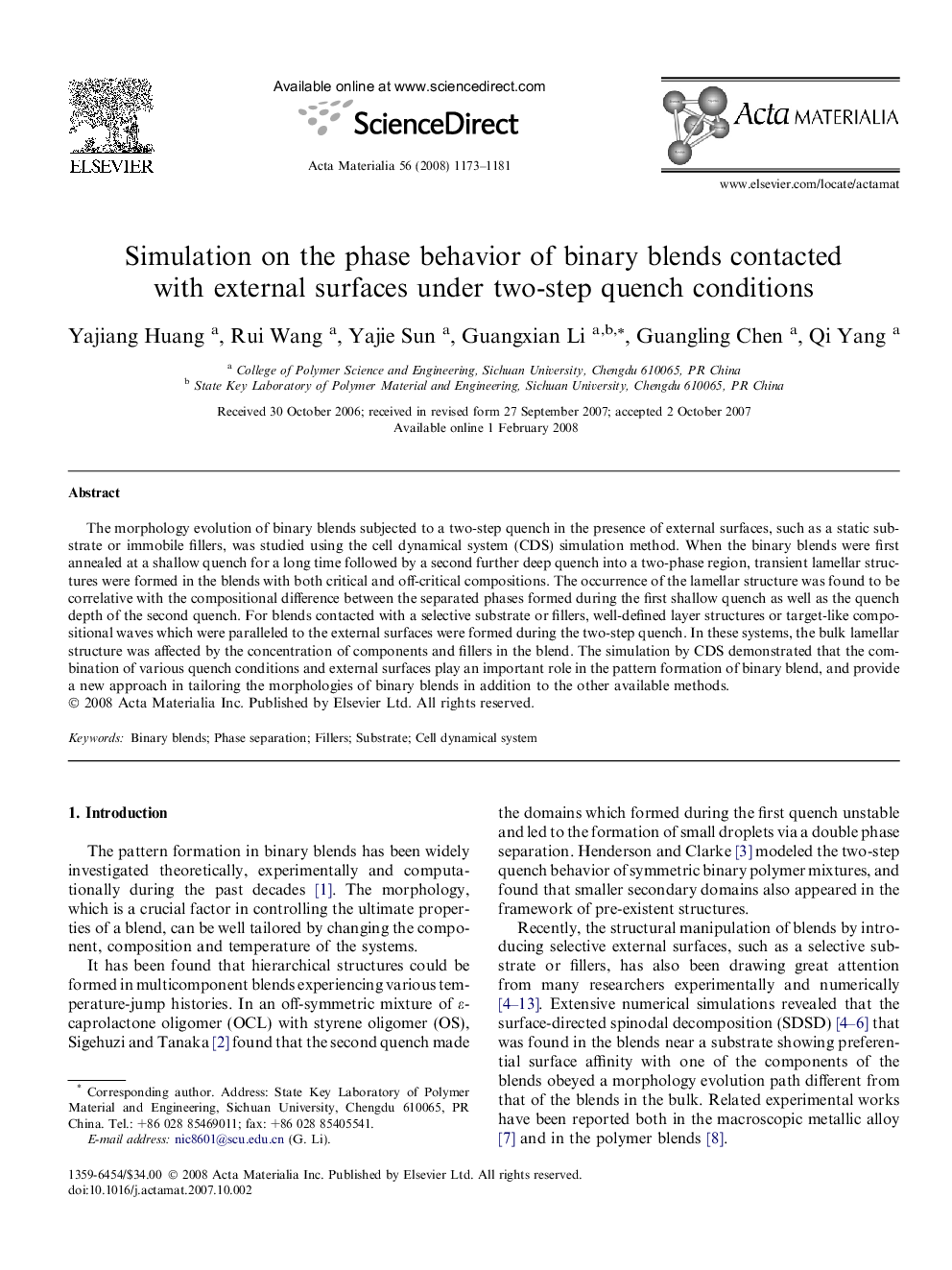| Article ID | Journal | Published Year | Pages | File Type |
|---|---|---|---|---|
| 1449164 | Acta Materialia | 2008 | 9 Pages |
The morphology evolution of binary blends subjected to a two-step quench in the presence of external surfaces, such as a static substrate or immobile fillers, was studied using the cell dynamical system (CDS) simulation method. When the binary blends were first annealed at a shallow quench for a long time followed by a second further deep quench into a two-phase region, transient lamellar structures were formed in the blends with both critical and off-critical compositions. The occurrence of the lamellar structure was found to be correlative with the compositional difference between the separated phases formed during the first shallow quench as well as the quench depth of the second quench. For blends contacted with a selective substrate or fillers, well-defined layer structures or target-like compositional waves which were paralleled to the external surfaces were formed during the two-step quench. In these systems, the bulk lamellar structure was affected by the concentration of components and fillers in the blend. The simulation by CDS demonstrated that the combination of various quench conditions and external surfaces play an important role in the pattern formation of binary blend, and provide a new approach in tailoring the morphologies of binary blends in addition to the other available methods.
